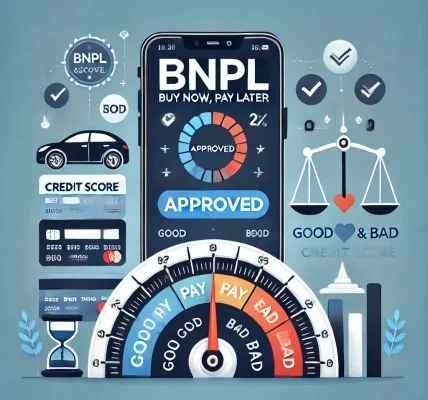Introduction
Peer-to-peer (P2P) lending platforms have revolutionized the way individuals and businesses access loans. By connecting borrowers directly with investors, these platforms eliminate the need for traditional banks, offering competitive interest rates and potentially high returns. As we step into 2025, P2P lending continues to be a lucrative investment option but comes with inherent risks.
In this guide, we explore the risks, returns, and top P2P lending platforms that investors should consider in 2025.
1. What is Peer-to-Peer Lending?
P2P lending is an online marketplace that connects borrowers seeking loans with investors willing to lend funds for a return. These loans can be personal, business-related, or even for real estate purposes.
How Does P2P Lending Work?
- Borrowers apply for loans through a P2P platform.
- The platform assesses their creditworthiness and assigns a risk rating.
- Investors select loans based on risk appetite and expected returns.
- Borrowers repay the loan with interest over a fixed period.
2. Risks Associated with P2P Lending
1. Default Risk
Borrowers may fail to repay loans, leading to potential losses for investors. Some platforms mitigate this by diversifying investments across multiple loans.
2. Platform Risk
If the P2P platform shuts down or faces financial instability, investors may struggle to recover their funds.
3. Liquidity Risk
Unlike stocks, P2P investments are not easily liquidated before maturity, making them less flexible.
4. Regulatory Uncertainty
Governments may impose new regulations affecting the operation of P2P platforms, influencing returns and accessibility.
5. Economic Downturns
Economic crises can lead to higher default rates, affecting overall returns.
3. Returns from P2P Lending
P2P lending platforms generally offer higher returns than traditional savings accounts and fixed deposits.
Expected Returns Based on Risk Categories:
- Low-risk loans: 4-6% annual return
- Medium-risk loans: 7-10% annual return
- High-risk loans: 11-15%+ annual return
Factors Influencing Returns:
- Borrower credit rating
- Loan duration and interest rate
- Platform fees and default rates
4. Best P2P Lending Platforms in 2025
1. LendingClub (Best for Beginners)
✅ Established and regulated platform ✅ Offers diversified loan options ✅ Automated investing features ⚠️ Moderate platform fees
2. Prosper (Best for Personal Loans)
✅ User-friendly interface ✅ Competitive returns (5-11%) ✅ Risk-based loan grading system ⚠️ Higher default rates in certain categories
3. Funding Circle (Best for Small Business Loans)
✅ Specializes in business lending ✅ Offers institutional investor participation ✅ Lower default rates than personal loans ⚠️ Requires higher minimum investment
4. Peerform (Best for High Returns)
✅ High-yield loan opportunities ✅ No fees for investors ✅ Focus on creditworthy borrowers ⚠️ Limited diversification options
5. Mintos (Best for Global Diversification)
✅ Access to loans from multiple countries ✅ Auto-investment options available ✅ Buyback guarantees on certain loans ⚠️ Currency fluctuation risks
5. How to Choose the Right P2P Lending Platform?
Key Considerations:
- Loan Diversification: Platforms offering a variety of loans reduce risk exposure.
- Default Rate: Choose platforms with low default rates to minimize losses.
- Investor Protection Measures: Platforms with reserve funds or buyback guarantees offer added security.
- Ease of Use: A user-friendly interface with automated investing options is preferable.
- Regulatory Compliance: Ensure the platform adheres to financial regulations for investor protection.
| Feature | Recommended Platform |
|---|---|
| Best for Beginners | LendingClub |
| Best for High Returns | Peerform |
| Best for Small Business Loans | Funding Circle |
| Best for Personal Loans | Prosper |
| Best for Global Investing | Mintos |
6. Security Tips for P2P Lending Investors
🔹 Diversify Investments: Spread funds across multiple loans to mitigate default risks. 🔹 Research Borrower Profiles: Analyze credit scores and repayment histories before investing. 🔹 Use Auto-Invest Features: Saves time and ensures optimal loan allocation. 🔹 Withdraw Earnings Regularly: Avoid reinvesting all profits to maintain liquidity. 🔹 Stay Updated with Platform Regulations: Monitor changes in financial laws affecting P2P lending.
7. Final Thoughts
P2P lending platforms offer an excellent opportunity for investors seeking higher returns compared to traditional savings methods. However, they come with risks such as defaults, liquidity issues, and platform reliability.
By carefully selecting regulated and reputable P2P lending platforms and applying proper risk management strategies, investors can maximize returns while minimizing potential losses.
Disclaimer:
This blog is for informational purposes only and does not constitute financial advice. Investors should conduct thorough research and consult financial advisors before engaging in P2P lending.




